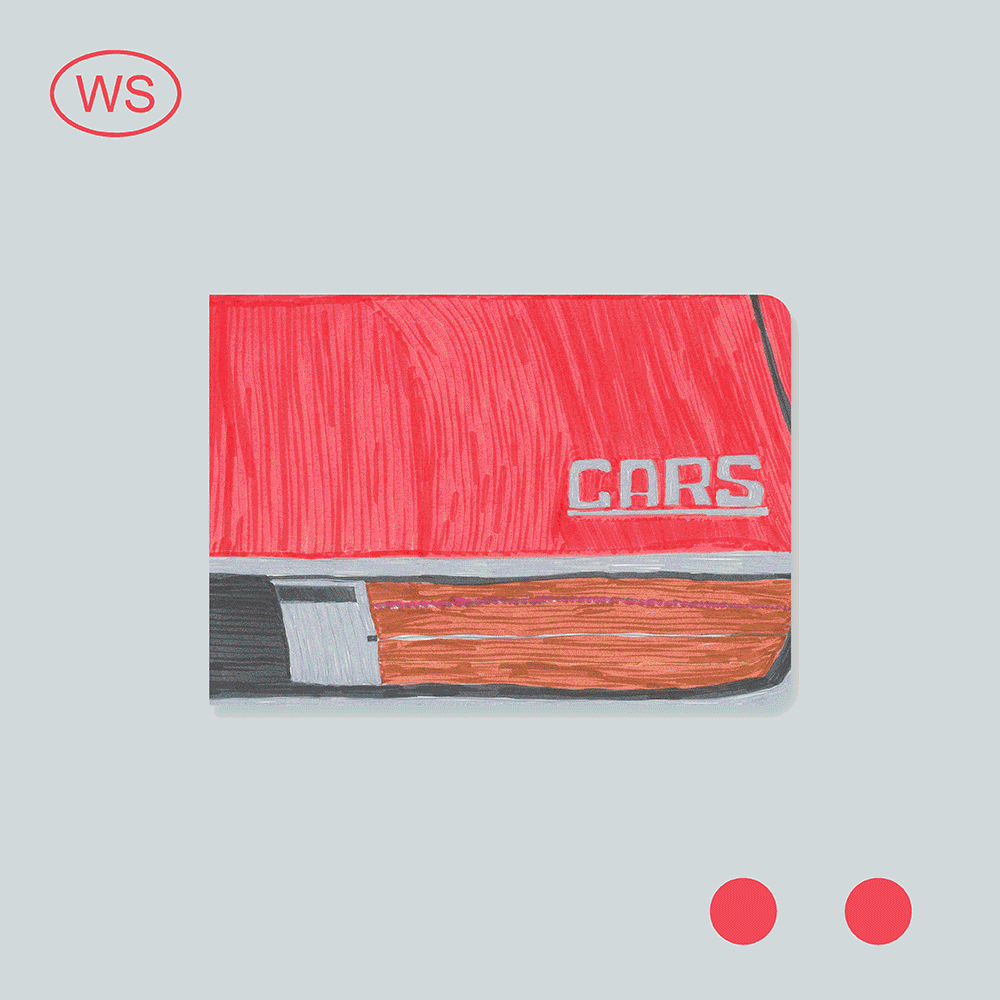
1
‹Disneyfied› artefacts of the digital age as part of the Southern California landscape
With the uprise of mobile devices, the infrastructural needs of the telecommunication industry have exploded, and since the 1980s, cell towers have started to fill the planet. The scenery changed dramatically when an antenna was transformed into an artificial pine tree for the first tim in 1992. Since then, this kind of camouflage has evolved into a global phenomenon that raises fundamental questions about the relationship between humans and nature.
The images from the series Second Nature focus on cell tower trees that became part of the Southern California landscape. The series depicts these artifacts of the digital age as, in Amy Clarke’s words, a «societal preference for fake aesthetics over ugly reality.»¹ The book consists of two parts, Mono-Palms and Mono-Pines—you read one side, then flip the book over and read the other one.

2
Excerpt of Transcending Nature by Ziad Mahayani
One can understand the mobile phone trees as camouflaged technology or as optimized nature, as a tree that can do more than just look like a tree. One can understand the mobile phone trees as optimized, transcended nature, which would be completely in line with the new paradigm of the dawning digital age. In this way, the tree becomes a trans-tree, a trans-arbor, a prototype of transcended nature that is supposed to be able to do more than just be nature. Seen from this perspective, the mobile phone trees are part of a development that since the late twentieth century has created and is yet to create many similarly irritating hybrid artifacts, from genetically optimized plants to cloned animals and artificial organs printed out in 3D bioprinting.
The title of the series of images by Işık Kaya and Thomas Georg Blank, Second Nature, ingeniously reflects the ambivalent and tilting nature of the mobile phone trees. It can be read as a second skin in the sense of a new garment for nature, or as the next stage of evolution, as optimized and more efficient nature, as «Nature 2.0.»²

3

4

5

6
Işık Kaya & Thomas Georg Blank, Second Nature
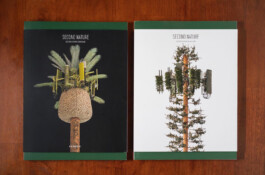
7
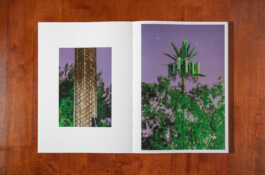
8

9
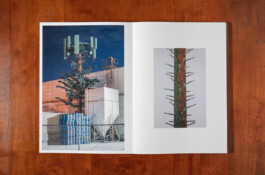
10

11
Texts: Amy Clarke, Ziad Mahayni
Design: Işık Kaya,Thomas Georg Blank
Publisher: Kehrer Verlag, 2022
Softcover with open spine in slipcase, tête-bêche binding
24 × 33 cm
112 pages
99 color illustrations
English
ISBN 978-3-96900-056-4
About
Işık Kaya and Thomas Georg Blank (Kaya Blank) are lens-based media artists whose work explores the way in which humans shape and inhabit the world. Their research-heavy approach is deeply rooted in documentary practices. However, by pushing the boundaries of how reality can be depicted, they transcend the domain of representation and create completely independent, often hyperreal visual world. As a result, the boundaries between reality and fiction in their work become blurred.
Their projects often focus on traces of economic infrastructures and how humanity’s dominance over nature finds its manifestation in everyday architecture. By framing their subjects almost exclusively at night, they aim to accentuate the artificial and uncanny qualities of contemporary urban environments and human settlements.
Editor
References
¹ Amy Clarke, «Fake Foliage and Faux-cades: The Contextual Authenticity of Disguised Infrastructure», Second Nature (monograph), Işık Kaya a. Thomas Georg Blank (eds.), Kehrer Verlag, Heidelberg 2022.
² Ziad Mahayni, «Transcending Nature. Antennafication of Humans and Trees», Second Nature (monograph), Işık Kaya a. Thomas Georg Blank (eds.), Kehrer Verlag, Heidelberg 2022.
Notes
1–6 Işık Kaya, Thomas Georg Blank, Second Nature, Southern California, 2022.
7–11 Işık Kaya, Thomas Georg Blank, Second Nature (monograph), Kehrer Verlag, Heidelberg, 2022.

1
‹Disneyfied› artefacts of the digital age as part of the Southern California landscape
With the uprise of mobile devices, the infrastructural needs of the telecommunication industry have exploded, and since the 1980s, cell towers have started to fill the planet. The scenery changed dramatically when an antenna was transformed into an artificial pine tree for the first tim in 1992. Since then, this kind of camouflage has evolved into a global phenomenon that raises fundamental questions about the relationship between humans and nature.
The images from the series Second Nature focus on cell tower trees that became part of the Southern California landscape. The series depicts these artifacts of the digital age as, in Amy Clarke’s words, a «societal preference for fake aesthetics over ugly reality.»¹ The book consists of two parts, Mono-Palms and Mono-Pines—you read one side, then flip the book over and read the other one.

2
Excerpt of Transcending Nature by Ziad Mahayani
One can understand the mobile phone trees as camouflaged technology or as optimized nature, as a tree that can do more than just look like a tree. One can understand the mobile phone trees as optimized, transcended nature, which would be completely in line with the new paradigm of the dawning digital age. In this way, the tree becomes a trans-tree, a trans-arbor, a prototype of transcended nature that is supposed to be able to do more than just be nature. Seen from this perspective, the mobile phone trees are part of a development that since the late twentieth century has created and is yet to create many similarly irritating hybrid artifacts, from genetically optimized plants to cloned animals and artificial organs printed out in 3D bioprinting.
The title of the series of images by Işık Kaya and Thomas Georg Blank, Second Nature, ingeniously reflects the ambivalent and tilting nature of the mobile phone trees. It can be read as a second skin in the sense of a new garment for nature, or as the next stage of evolution, as optimized and more efficient nature, as «Nature 2.0.»²

3

4

5

6
Işık Kaya & Thomas Georg Blank, Second Nature

7

8

9

10

11
Texts: Amy Clarke, Ziad Mahayni
Design: Işık Kaya,Thomas Georg Blank
Publisher: Kehrer Verlag, 2022
Softcover with open spine in slipcase, tête-bêche binding
24 × 33 cm
112 pages
99 color illustrations
English
ISBN 978-3-96900-056-4
About
Işık Kaya and Thomas Georg Blank (Kaya Blank) are lens-based media artists whose work explores the way in which humans shape and inhabit the world. Their research-heavy approach is deeply rooted in documentary practices. However, by pushing the boundaries of how reality can be depicted, they transcend the domain of representation and create completely independent, often hyperreal visual world. As a result, the boundaries between reality and fiction in their work become blurred.
Their projects often focus on traces of economic infrastructures and how humanity’s dominance over nature finds its manifestation in everyday architecture. By framing their subjects almost exclusively at night, they aim to accentuate the artificial and uncanny qualities of contemporary urban environments and human settlements.
Editor
References
¹ Amy Clarke, «Fake Foliage and Faux-cades: The Contextual Authenticity of Disguised Infrastructure», Second Nature (monograph), Işık Kaya a. Thomas Georg Blank (eds.), Kehrer Verlag, Heidelberg 2022.
² Ziad Mahayni, «Transcending Nature. Antennafication of Humans and Trees», Second Nature (monograph), Işık Kaya a. Thomas Georg Blank (eds.), Kehrer Verlag, Heidelberg 2022.
Notes
1–6 Işık Kaya, Thomas Georg Blank, Second Nature, Southern California, 2022.
7–11 Işık Kaya, Thomas Georg Blank, Second Nature (monograph), Kehrer Verlag, Heidelberg, 2022.
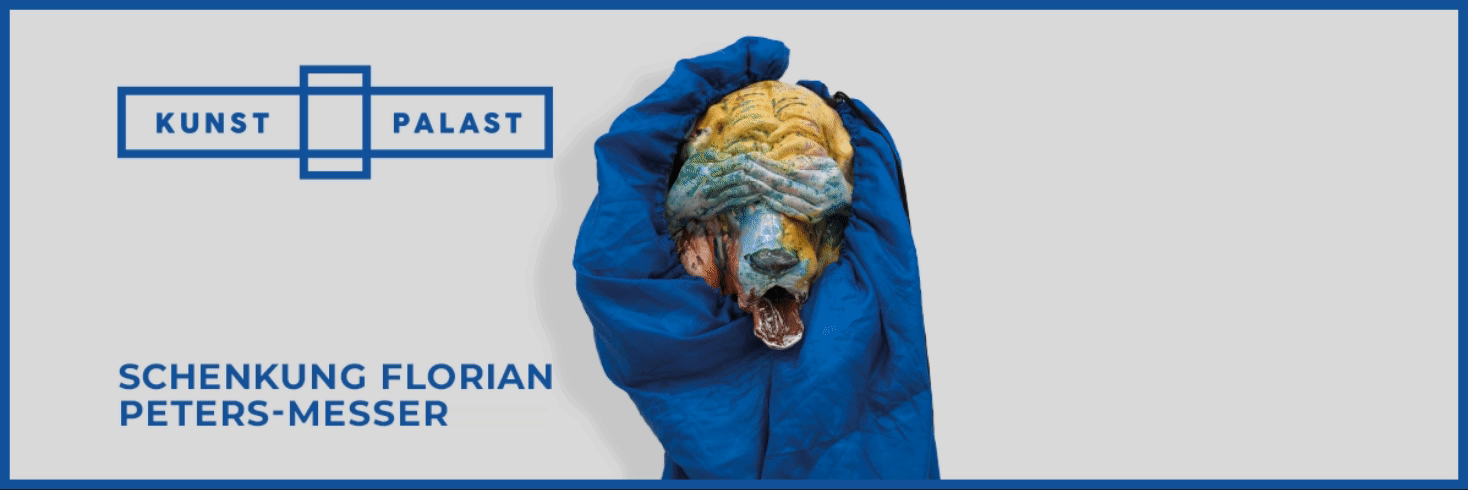
allcitiesarebeautiful.com is a platform for contemporary
documentary photography and reflective writing.
© allcitiesarebeautiful.com 2016–2024
allcitiesarebeautiful.com is a platform for contemporary
documentary photography and reflective writing.
